The last of the giants: Airbus A-380
The small miniature scale of 1:144 and the experience of impressive size, which can only be handled with caution above the "airspace" of the workbench or squeezed into the limited room of an airbrush extraction cabin, do not really seem to go together: when scaled down one hundred and forty-four times, even large aircraft purr together into really very small miniatures, which can usually be parked comfortably even on the surface of one hand – well, unless you are dealing with an Airbus A-380-800!
"Size matters" is an idea, however, that is not unique to this model, but also played its part in the massive original: sheer size and record-breaking dimensions are likely to have value in themselves in aviation. The associated prestige and assured attention stroke vanities and boost sales, or at least that is a common expectation. Accordingly, the history of aviation has never been one of chasing the faster, higher or more efficient alone, but sometimes one of superlative greatness. It's easy to prove that this is indeed how you gain notoriety: who doesn't know these names, for instance? Dornier Do-X, Junkers G-38, LZ-129 Hindenburg, Boeing 314 Clipper, Howard Hughes H4 "Spruce Goose", Boeing 747 or Antonov An-225 Mriya... All these constructions were the very largest of their kind at their time, or at least very close to it.
On the Airbus A-380
This factor will also have played a role in the multinational foundation stone for the Airbus A-380. In the 1980s, a strategic decision was made at Airbus in favour of a large four-engine wide-body jet that would compete in the league of the big boys and surpass them in crucial respects. The project, initially called A 3XX, envisaged the use of new types of composite materials and a new generation of engines to reduce operating costs by 15 per cent compared with the usual values for wide-body jets at the time.
With the A-380 resulting from the subsequent concept studies, Airbus was able to offer the largest commercial aircraft ever built in series in the world. Airbus was also exposed to the fact that the other major suppliers were withdrawing from the development of large four-engine aircraft at this time. Boeing, for example, had decided in those years to stop developing the 747 and to phase out production in favour of smaller and enormously powerful jets. Behind these two paths are two different strategic approaches: Airbus had focused on the hub concept with the A-380, while Boeing, McDonnell or even Iljushin were preparing to intensify direct flight connections. The future would soon show which of the two approaches would prevail.
During the 1990s, work on the design of the new A-380 was divided between the main co-ordinating countries France, Germany, Great Britain and Spain, until Airbus was able to release the production of a first prototype in 2000 after receiving 50 firm orders. Shortly after the public presentation of the first A-380 with the serial number (MSN) 001 in January 2005, the maiden flight of an A-380 took place in Toulouse on 27 April, also with great media attention. In November 2006, all tests and certificates of the certification procedure were completed and the commercial use of the A-380 could begin.
In fact, however, the deployment of the huge wide-body aircraft turned out to be less spectacular and successful than Airbus had planned. After initial delivery difficulties on the part of Airbus and withdrawn purchase options on the part of interested airlines, production fell short of the forecast figures. The "last giant" soon threatened to become a "sad giant". Due to the size of the aircraft, some airports could not be served so easily, and expensive infrastructural measures became necessary in order to be able to operate the giant economically at all. Among the 14 airlines that actually operated the A-380 in the coming years, Emirates stands out with an impressive 124 aircraft. All the other operators deployed far fewer A-380s: Singapore Airlines operated 24, Lufthansa 14 and British Airways 12, while four of the remaining airlines flew 10 A-380s each, and the others even fewer. In March 2019, the last A 380 was delivered, bringing production of the last four-engine widebody to an end after only 251 examples. Currently, some retired A-380s are being reactivated to cope with the new surge in world air traffic following the Corona restrictions. In 2023, All Nippon Airways (2), Etihad Aiways (10), Air France (6) and Malaysia Airlines (6) will fly the last of the big Airbus giants.
Will the Airbus A-380 be able to join the legendary aircraft giants listed at the beginning? In terms of dimensions alone, this giant has an unassailable fixed place. With a wingspan of 79.80 metres, it surpasses the Boeing 747's 68.4 metres by far; however, both have to admit defeat to an An-225 Mryia with a wingspan of 88.4 metres. With a length of 72.7 metres, it falls just short of the 76.3 metres of the 747 (An-225 Mriya 84.0 metres). Certified for a maximum of 853 passengers and a range of 15,200 kilometres as well as a top speed of 940 km/h (Mach 0.87), the A-380 is undisputedly the largest commercial aircraft ever built in series in the world - a title that the giant will not have to relinquish again in the foreseeable future.
About the kit and the building process
As the reader may have realised at this point, I am not an expert on the airliner scene. I'll add right away: the 1:144 scale is also relatively new to me, my experience here is limited to a handful of models. To end up with a 144 scale A-380, it took a special occasion : originally I had bought the A-380 because I wanted to use its landing gear for another project (the fictitious Space Clipper Orion III, the idea with the landing gear has since fallen through). However, when I looked through the A-380 kit parts and even more when I held them in my hands, I liked them so much that I decided to actually build this beautiful airliner as a change.
I was indeed impressed by the parts: on the one hand by their sheer size, on the other hand by the proverbial "courage to leave gaps", which literally showed itself here in the rows of windows that could not be glazed and the yawning emptiness of the voluminous fuselage interior. The question how to deal with the empty passenger windows was quickly solved by the excellent decal sheet. There are two versions for the window surrounds, one with only the surrounds and the other with the dark window areas filled in. In a bit of painstaking work the windows were filled and then the surfaces were sanded; with the high quality decals this finally results in a quite nice overall picture.
A more serious issue was the badly warped halves of the two wings. I had to convince the stubborn polystyrene to take on a shape at least similar to the prototype by using heat and steam - which I finally managed to do. However, it was not only the billowing steam that made me sweat from time to time!
The fully assembled fuselage proved to be too soft and springy when it came to attaching the two widely extending wings. To remedy this and generally increase stability, I fitted a suitable metal round bar as an additional wing spar. I can highly recommend this.
Conclusion
In one of the attached pictures I have photographed the A-380 together with a scale Boeing 307 Stratoliner from 1940. I was amazed and fascinated by the size comparison: only about sixty years lie between the two respective aircraft giants of their time! Personally, I thoroughly enjoyed building and engaging with Revell's A-380. Despite all the challenges described, this kit remains quite a varied and speedy pleasure to build, which will result in an impressive model. Not only, but also because of the size of the model!
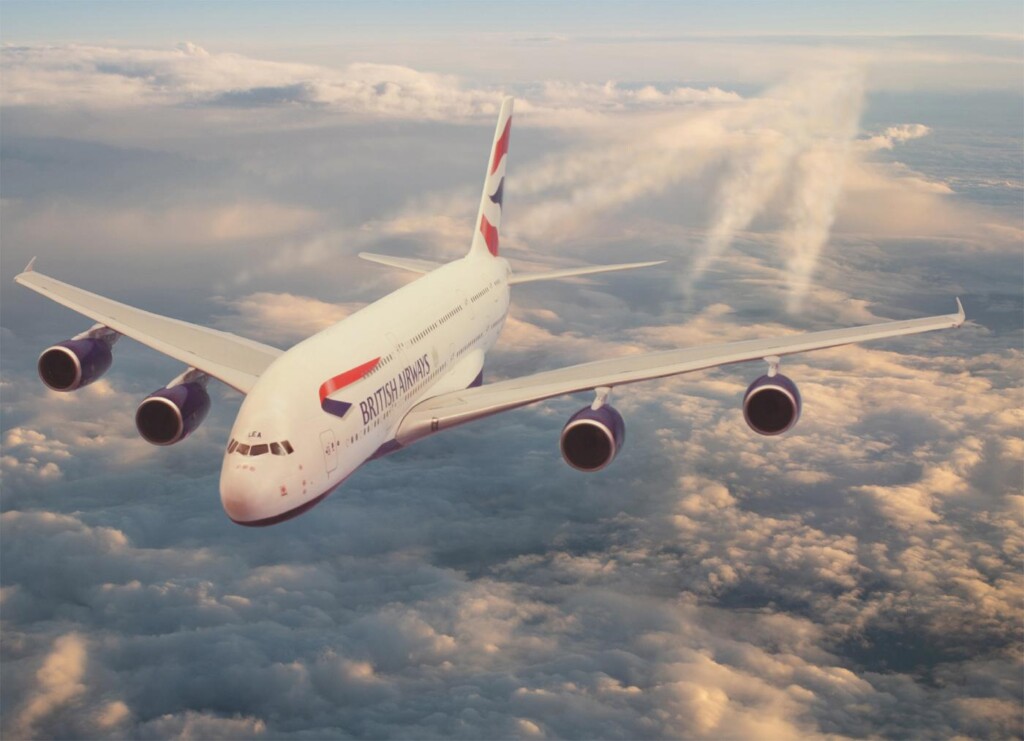
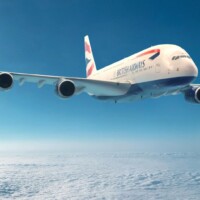


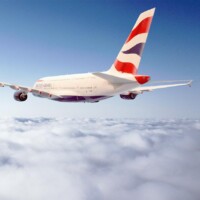

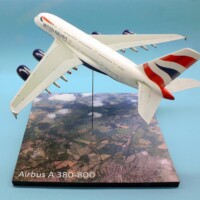
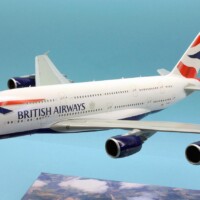
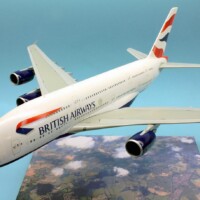

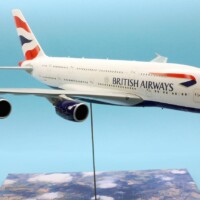
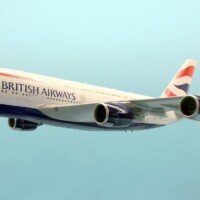
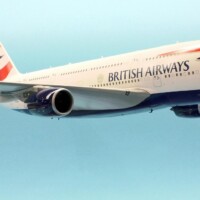
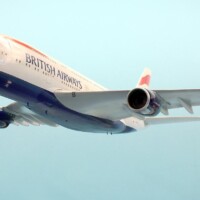
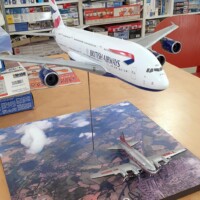
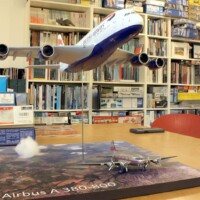
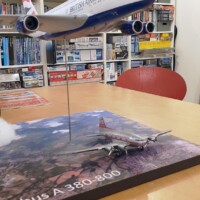
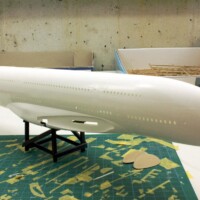
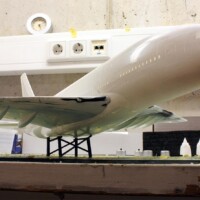


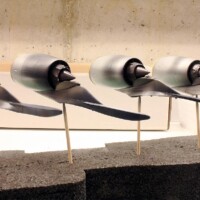
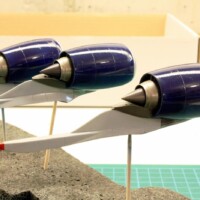

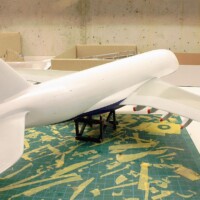
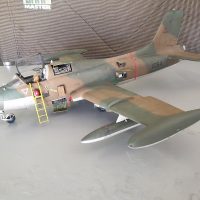
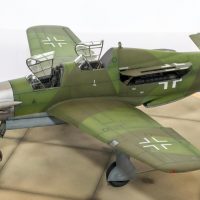


Another fantastic result, Roland! A great article too! I am still amazed that the A-380 did not prove as successful as envisaged.
I thank you very much for your words, Spiros!
Nice to see one of these actually built! Well done, Roland.
Thank you John!
Wow, the comparison of the two airplanes is truly dramatic!
Another great product of ROSachsenhofer Model Industries Ltd.
I'm glad you find the size comparison impressive too.
Best regards, ROSachsenhofer Model Industries Ltd.
Superb result, Roland @rosachsenhofer
The comparison clearly shows how aviation has evolved.
Thank you for your interest and your words!
Wonderful build and finish. Great skyward photos reflect high realism.
That's very motivating, thank you!
Flew the actual thing some weeks ago. I was expecting more wow factor but i guess the larger the aeroplane, the more passengers they manage to cram into the thing. Bet the more glamourus top deck was comfy though. What did make me lift my eyebrows though, were the number of toilets arranged up front.
Another beast tamed by The Sachs Team. You raise the bar with this airliner and we will expect more of the same in the future.
Wow, those are impressive words - thank you!
I guess this one won’t fit inside your hangar, Roland. An informative write-up, and a neat solution to the “floppieness” of the kit. It looks wonderful in the British Airways livery.
Thank you, your words motivate me!
Simply beautiful display Roland !
Thank you Paul
I built this kit for a late friend who died of cancer just as I had finished it.
I had similar issues you had with this kit. It's wings are a touch soft and the landing gear is delicate. However, it is the largest model in my collection (it's almost as big as the 1/2700 Zvezda Star Destroyer.) One of the few memorials to my late friend who loved aviation almost as much as I do.
Touching to hear, thank you for your feedback
Wow! Yes, that is a big dude, but also a beautifully done model! Those pics could fool the eye!
Really nice to hear!
That's awesome! Nice pics.
Thank you Chas!